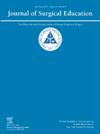利用无监督模拟和远程异步反馈提高医科学生的成绩。
IF 2.6
3区 医学
Q1 EDUCATION, SCIENTIFIC DISCIPLINES
引用次数: 0
摘要
目的:本研究旨在评估医科学生在无监督的情况下通过远程异步反馈模拟两种临床程序的培训效果:本研究旨在评估医科学生在无监督的情况下使用远程异步反馈模拟训练两种临床程序的效果,并与使用现场反馈的强化讲习班进行比较:设计、设置和参与者:招募三年级医学生并将其随机分为两组:胸腔穿刺术或旁路穿刺术。在每组中,参与者又被随机分为有远程异步反馈的无监督模拟组(实验组;EG)或 2 小时工作坊组(对照组;CG)。实验组接受两次 20 分钟的无监督培训,并获得远程异步反馈。对照组则参加了 2 小时的工作坊,在工作坊中接受面对面的反馈。培训结束后,使用客观结构化技术技能评估量表(OSATS)对学生进行评估。参加胸腔穿刺术培训的 20 名学生和参加旁路穿刺术培训的 23 名学生完成了远程和异步反馈的 2 次培训,胸腔穿刺术组和旁路穿刺术组的 30 名学生完成了 2 小时的研讨会:结果:在两个手术中,EG的通过率明显高于CG(胸腔穿刺术80%对43%,旁路穿刺术91%对67%,P值< 0.05):异步教学法使 EG 学生的成绩高于 CG 学生。这种新颖的模式让学生和教师可以按照自己的进度进行培训和评估。本文章由计算机程序翻译,如有差异,请以英文原文为准。
Improving Medical Student Performance With Unsupervised Simulation and Remote Asynchronous Feedback
Objective
This study aims to assess the effectiveness of training medical students to perform two clinical procedures using unsupervised simulation with remote asynchronous feedback, compared to an intensive workshop with in-person feedback.
Design, Setting, and Participants
Third-year medical students were recruited and randomized into 2 groups: Thoracentesis or paracentesis. Within each group, participants were further randomized into either unsupervised simulation with remote asynchronous feedback (experimental group; EG) or a 2-hour workshop (control group; CG). The EG underwent two unsupervised 20-minute training sessions and received remote asynchronous feedback. The CG had a 2-hour workshop where they received in-person feedback. After training, students were assessed using the objective structured assessment of technical skills (OSATS) scale. Twenty students in thoracentesis and 23 in paracentesis training completed the 2 training sessions with remote and asynchronous feedback, and 30 students for both thoracentesis and paracentesis groups completed the 2-hour workshop.
Results
The EG achieved a significantly higher passing rate than the CG on both procedures (thoracentesis 80% vs. 43%, paracentesis 91% vs. 67%, p-value< 0.05).
Conclusion
The asynchronous educational method allowed EG students to achieve higher performance than CG students. This novel modality allowed students and instructors to train and assess at their own pace.
求助全文
通过发布文献求助,成功后即可免费获取论文全文。
去求助
来源期刊

Journal of Surgical Education
EDUCATION, SCIENTIFIC DISCIPLINES-SURGERY
CiteScore
5.60
自引率
10.30%
发文量
261
审稿时长
48 days
期刊介绍:
The Journal of Surgical Education (JSE) is dedicated to advancing the field of surgical education through original research. The journal publishes research articles in all surgical disciplines on topics relative to the education of surgical students, residents, and fellows, as well as practicing surgeons. Our readers look to JSE for timely, innovative research findings from the international surgical education community. As the official journal of the Association of Program Directors in Surgery (APDS), JSE publishes the proceedings of the annual APDS meeting held during Surgery Education Week.
 求助内容:
求助内容: 应助结果提醒方式:
应助结果提醒方式:


